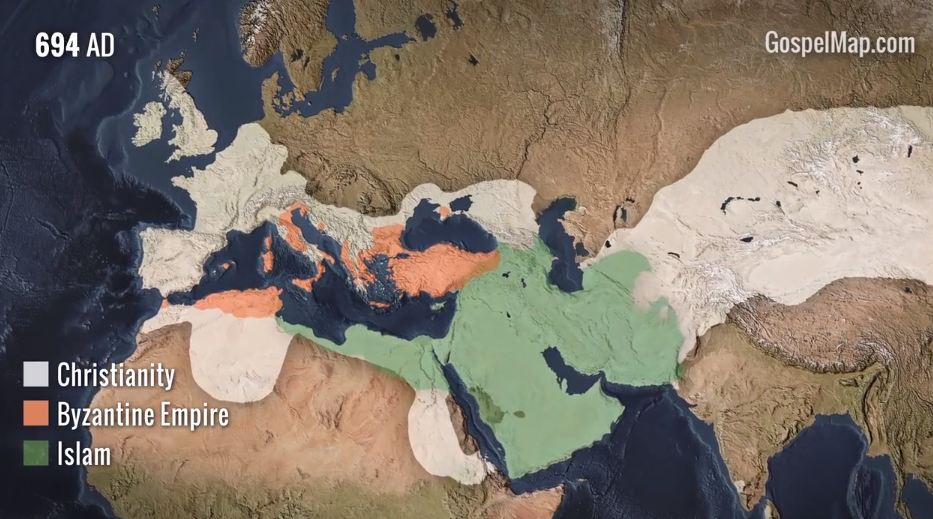How Christianity and Islam took over the world, in 90 seconds
A fascinating, if slightly misleading, short history

Your support helps us to tell the story
From reproductive rights to climate change to Big Tech, The Independent is on the ground when the story is developing. Whether it's investigating the financials of Elon Musk's pro-Trump PAC or producing our latest documentary, 'The A Word', which shines a light on the American women fighting for reproductive rights, we know how important it is to parse out the facts from the messaging.
At such a critical moment in US history, we need reporters on the ground. Your donation allows us to keep sending journalists to speak to both sides of the story.
The Independent is trusted by Americans across the entire political spectrum. And unlike many other quality news outlets, we choose not to lock Americans out of our reporting and analysis with paywalls. We believe quality journalism should be available to everyone, paid for by those who can afford it.
Your support makes all the difference.The video below depicts the growth and spread of the world's two largest religions over a span of 2,000 years. Represented in white and green, respectively, Christianity and Islam spring up from obscurity in the Middle East to morph into globe-spanning juggernauts.
It was produced last year by the Western Conservatory of the Arts and Sciences, a rather grandiosely named Christian ministry based in Tennessee, as an accompaniment to a supposedly historically accurate map that depicts the "Spread of the Gospel." A note on the ministry's website cites biblical scripture, pitching the map as a "beautiful visual reminder that 'the word of the truth, the gospel, which has come to you, as indeed in the whole world … is bearing fruit and increasing.' "
Real historians will doubtless find plenty to quibble about with the broad sweep of the canvas that this video represents. And, to be sure, this ministry doesn't exactly have an objective approach to the history of Islam — in another post on its website, it looks forward to Syrian refugees being disabused of their "Muhammedan way of life."
The video begins with the Roman empire and shows Christianity sprouting up on its margins, then spreading elsewhere. Islam follows suit a bit later, moving rapidly through the crumbling Byzantine and Sassanian empires, through North Africa and into parts of Europe. They both inexorably expand thereafter.
Over the course of time, this green-white tableau gets interrupted by ruptures in the form of other hues — the purple rampages of the Mongols and the red splotch of Communism — but the video for the most part keeps it very simple.
The conflation of political boundaries and cultural spheres can be confusing throughout: In some instances, the reach of a religion is certainly political, such as Rome's acceptance of Christianity in the 4th century or the spread of the Caliphate in the first few centuries after the advent of Islam.
But elsewhere, particularly when gazing at centuries of supposed Christian expansion in Asia, it seems a gross exaggeration. Christianity was never the major religion farther east, but rather present through small communities of traders and missionaries. The same is also somewhat true for Islam's role across vast swaths of Africa and Southeast Asia in the centuries after its birth.
India, which represents almost a sixth of humanity, is hardly a Christian nation (as it appears in the last frame of the map). Rather it is majority-Hindu and has a far greater number of Muslims than Christians within its borders.
Copyright: Washington Post
Subscribe to Independent Premium to bookmark this article
Want to bookmark your favourite articles and stories to read or reference later? Start your Independent Premium subscription today.
Join our commenting forum
Join thought-provoking conversations, follow other Independent readers and see their replies
Comments